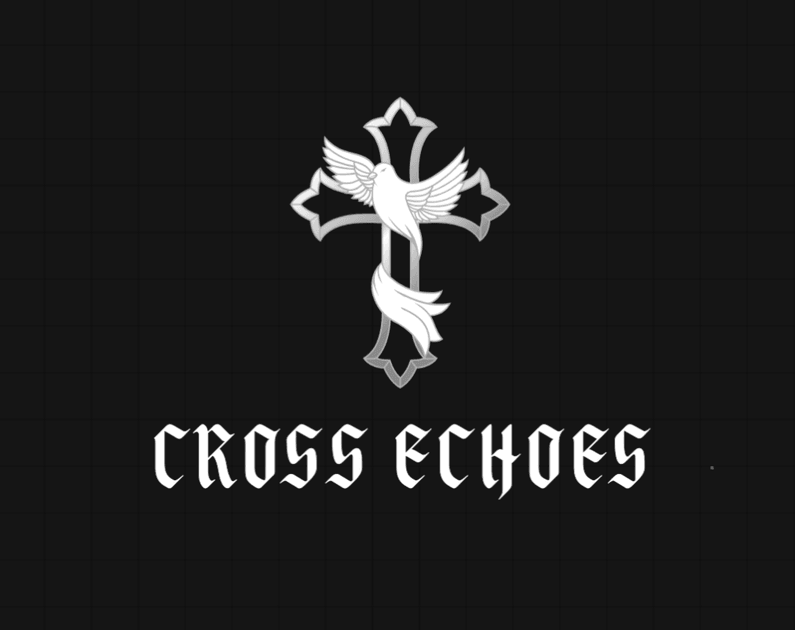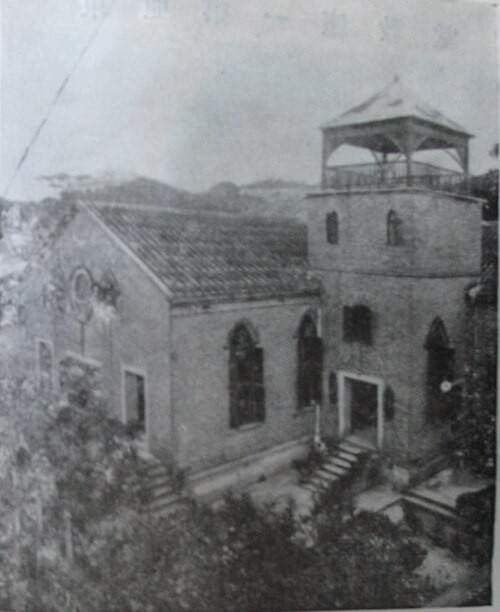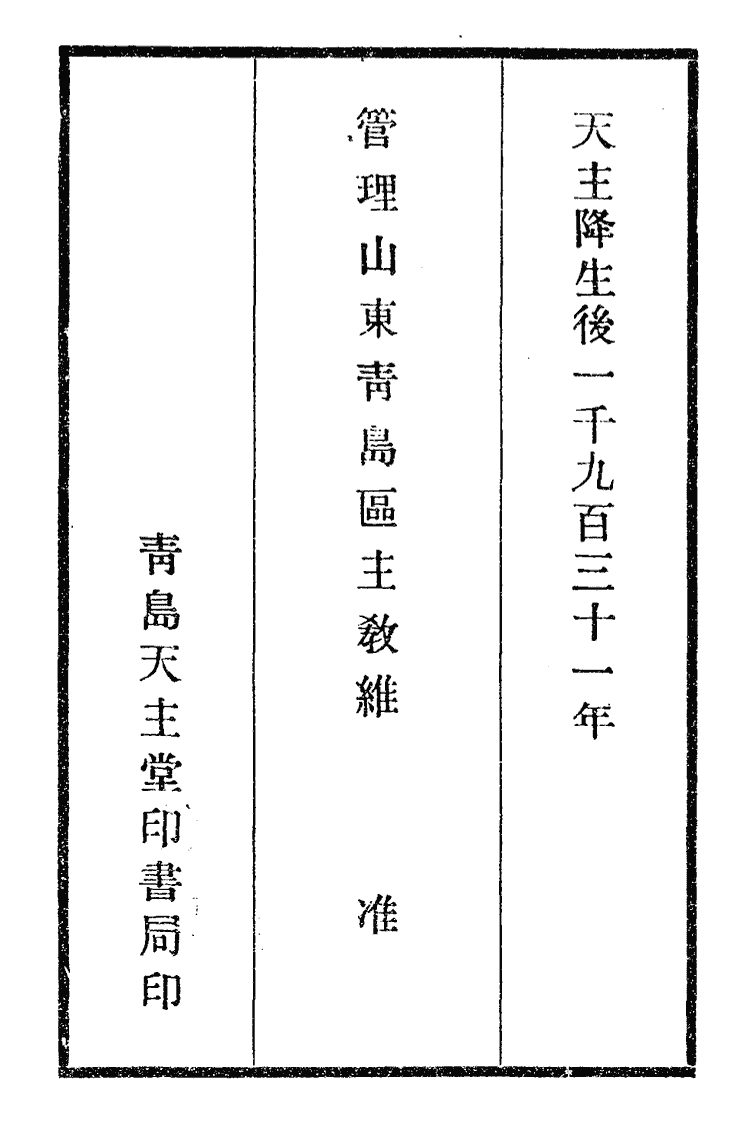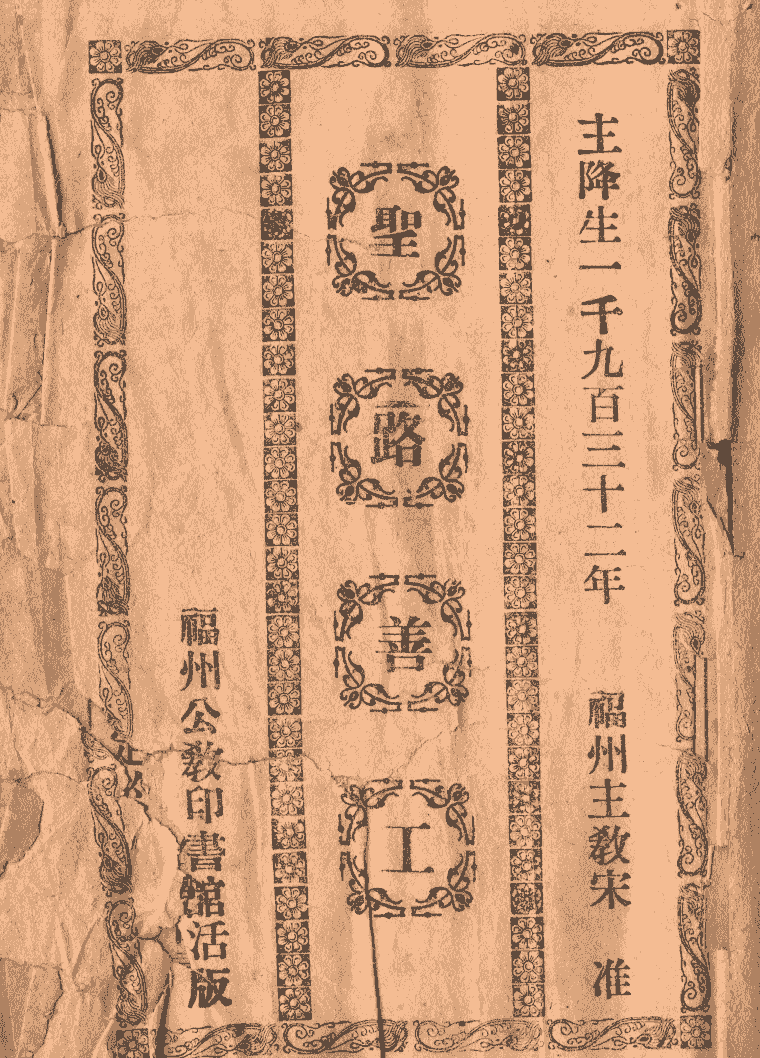

Echoes of
the Way of the Cross
A Digital Archive of
《聖路善工》
About This Project
This project explores the Sheng Lu Shan Gong ("Way of the Cross") via its several surviving editions, treating them not as discrete devotional booklets but as windows into the regional, linguistic, and cultural diversity of Chinese Catholicism in the early twentieth century.
By setting these editions side by side, we trace how a single devotional form was adapted across dioceses, languages, and audiences: some emphasize liturgical participation, others private meditation; some adopt modern punctuation, others preserve classical textual rhythms. Such variations are not incidental: they reveal how Catholic practice was negotiated in local contexts, balancing missionary traditions with Chinese cultural and spiritual frameworks.
Such a comparative approach is germane to scholarship, for it reveals the interplay of translation, print culture, and devotional life in a period of profound political and social change in China. To compare versions is to map a broader history of textual adaptation, cultural encounter, and religious resilience.
Digitization, transcription, and interactive tools enable this project to do more than preserve fragile texts but offer a platform to both researchers and the public for the exploration of how faith traveled, transformed, and took root in Chinese soil.
Welcome to the Sheng Lu Shan Gong Digital Archive
Welcome to the Sheng Lu Shan Gong Digital Archive
These two booklets—one from 1931, the other from 1932—are a rare glimpse into the localizing of Catholic devotional practice in early-twentieth-century China. While they bear the same title, they were printed from different dioceses and show contrasting patterns of linguistics, layout style, and spirituality. Both concurrently testify to the creative interplay of indigenous culture with universal faith. Herein you will get access to comparative research and interactive explorations, and we invite you to explore this strange crossing point of history and religion.
Sheng Lu Shan Gong refers quite simply to “Good Works of the Holy Way.” It is the Catholic Stations of the Cross devotional exercise in which Christians meditate on fourteen key events of the Passion of Christ. Using prayer and attention, Christians spiritually experience the sufferings of Jesus. Even the title of the book runs parallel with that of St. Aloysius Gonzaga, but this book cannot be a vita of a saint since it comes as a guidebook teaching the faithful this devotional practice.
During the 1930s individual Catholic publications in China were often locally printed by religious orders or dioceses and therefore exhibited variation of translation and format. Sheng Lu Shan Gong offers a typical example of a process of localization. Its differing versions reveal as much about the vitality of Republican Chinese Catholicism as they do about the resourcefulness of faithful at praying with their own cultural and linguistic context.
Acquisition Note:
Fuzhou Edition (1932)
The Fuzhou edition of the Sheng Lu Shan Gong, 1932, came into this archive through the purchase of a mixed lot of older Chinese books through an online dealer specializing in rare and religious texts. The booklet was found among miscellaneous printed matter without any prior cataloging of its historical significance.
A date, "1950," penned in ink on the cover misled earlier identification of the year of printing. Closer examination of the typography, layout, and ecclesiastical approval marks identified this as the actual 1932 Fuzhou impression, under the authority of the Catholic vicariate at that time. Despite its age and the political turmoil of mid-20th century China—periods in which Catholic devotional texts were frequently destroyed, hidden or dispersed—the volume remains in relatively good condition. This state of preservation enabled a full digital scan, such that the edition can now be studied as part of a long history of Catholic devotional print in China. The object itself testifies not only to the devotional practices of Catholics in the Republican era but also to the survival of religious material culture through decades of upheaval.
Two Versions, One Faith
Explore how Catholic devotion was expressed in different linguistic traditions
This digital archive explore the profound significance of the Stations of the Cross as we compare two distinct versions through a theological lens. This exploration offers insights into the spiritual journey of Christ's Passion, allowing believers to deepen their faith and reflect on the meaning of sacrifice and redemption.

Shandong Edition
🗓1930 📍Qingdao,Shandong
Official approved edition in classical Chinese, reflecting formal liturgical style.
Features:
Classical Chinese
Episcopal Approval
Formal Liturgy

Fujian Edition
🗓1930 📍Fuzhou,Fujian
Written in vernacular Chinese for better accessibility to local faithful.
Features:
Vernacular Style
Localized Expression
Accessible Language
©2025 - CrossEchoes



